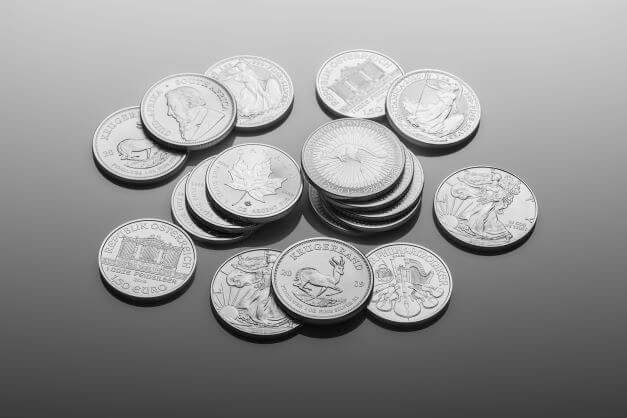Investing in precious metals is a profitable venture for many. Investors have long sought gold and silver due to their inherent value, liquidity, and potential returns on investment.
With gold prices at an all-time high and silver predicted to follow suit, now may be the time to consider investing in one or both of these valuable commodities.
This article will discuss whether you should invest in gold or silver to maximize your return.
The decision between gold and silver investments can take time and effort. Both offer advantages when it comes to diversifying an investor’s portfolio; however, as with any investment, risks must be considered before jumping into the market.
In addition, certain factors, such as current economic conditions, may also impact which metal provides the best opportunity for success.
Whether you’re just beginning your foray into investing, or you’ve been trading for years, understanding how each metal performs during different market cycles is key to making sound decisions regarding your investments.
We’ll explore some of the benefits and drawbacks associated with both gold and silver so that you can make an informed decision about where to place your money.
Pros And Cons Of Investing In Gold
Investing in gold can be a rewarding decision for many reasons. Gold is seen as an asset with intrinsic value, and its price tends to rise when paper money depreciates, making it a hedge against inflation. It also has the potential to increase significantly in value over time due to limited supply and growing demand from global investors.
However, there are some risks associated with investing in gold. Its price can be volatile and unpredictable, meaning any gains could be wiped out quickly during market corrections or bear markets.
Additionally, taxes on profits may apply depending on where you live, reducing your overall return. Furthermore, buying physical gold requires storage space and security measures such as insurance, which adds to the ownership cost.
Pros And Cons Of Investing In Silver

Investing in silver has its advantages and disadvantages. Many investors are attracted to the metal for attractive returns and potential safety from inflationary pressures. Here are some of the pros and cons associated with investing in silver:
Pros
– Silver is generally less volatile than gold or stocks; it tends to move more slowly due to its lower liquidity.
– It can be a good hedge against inflation because prices tend to increase during an economic crisis.
– The price of silver may also benefit from industrial demand if there is an increased use of it within technology or manufacturing processes.
– Investing in physical silver can release tangible asset protection since it holds value even during times of financial turmoil.
Cons
– Silver typically yields lower returns than other investments, such as stocks, bonds or real estate, so it’s only sometimes considered a high-return option.
– Since silver isn’t traded on exchanges like most securities, buying and selling incur higher costs than other investment types and requires access to reliable dealers.
– Silver does not offer any dividend payments, which diminishes the possible long-term gains that could be earned by holding onto positions for extended periods.
Investing in silver involves balancing risks and rewards according to individual goals and risk appetite levels. Careful research should always precede making decisions regarding silver investments or any other asset class.
Historical Performance Of Gold And Silver
Investing in gold and silver has been a popular way for individuals to diversify their portfolios. While both metals have been used as currency, investment vehicles, and stores of value throughout the centuries, their performance over time is different.
To help investors better understand these assets’ historical performance, this section will examine long-term trends in the prices of gold and silver.
Gold has outperformed other investments since 1971, when President Nixon took the US off the gold standard. Generally, gold prices rise during periods of economic uncertainty or inflationary pressures, such as recessions and pandemics like COVID-19.
This level of stability makes it an attractive asset class for many investors seeking safety from market volatility. Furthermore, while global production levels vary from year to year, demand remains relatively stable due to its use in jewellery and industrial applications. From 2000 through 2020, gold rose nearly 200%, compared to gains of only 25% for the S&P 500 index.
Silver’s price movements are more volatile than gold’s because most demand is driven by industrial uses rather than investor sentiment or fear.
Silver prices tend to be sensitive to changes in supply dynamics; thus, they can experience drastic spikes or drops depending on global mine output at any given period. Although silver experienced significant growth from 2000 to 2011 (nearly 600%), it fell dramatically in 2013 before recovering somewhat over the following years.
Despite this increased volatility compared to gold, some investors see potential opportunities for higher returns due to silver’s lower entry price point relative to gold.
It is essential for investors considering either metal as part of their investment portfolio strategy to research historical data to make informed decisions about which one might best suit their particular needs and goals. With knowledge of how each metal typically reacts under certain economic circumstances and understanding current market conditions, investors can leverage them accordingly into their overall financial plan.

How To Choose The Right Option For You
There are a few factors to consider when investing in gold or silver.
- Assessing Your Risk Tolerance: Before making any investment decision, you must assess your risk tolerance and financial goals. Depending on the amount of money you have available for investment, taking risks may not always be appropriate.
- Diversification: Consider diversifying your portfolio with gold and silver investments to balance potential losses from one asset class. An investor should also factor in the storage cost when owning physical metals such as coins or bars.
- Timing: Pay attention to market conditions before purchasing gold or silver bullion products because their prices can fluctuate quickly due to changing global economic situations. Investing at the right time could result in higher returns in the long run.
Investors must carefully weigh these considerations before deciding which option is most suitable for them and what type of investment strategy they would like to pursue going forward. Research into each option will help an investor make an informed decision while understanding the possible risks involved with either choice.
Conclusion
Gold and silver are two popular investment choices for investors. Both have advantages and disadvantages, which should be considered when making an informed decision on whether or not to invest in either asset.
The historical performance of both gold and silver is important to consider before investing. Gold has been known for its long-term stability, while silver tends to fluctuate more often with the market conditions. The returns from these investments can vary significantly, depending on the markets at any given time.
When deciding between gold and silver, evaluating your own budget and goals as an investor is essential. Consider the potential risks associated with each option and determine if the rewards outweigh them.
Take a look at historical trends to make an educated guess about what may happen in the future; however, remember that no one can accurately predict how either metal will perform over time.
Ultimately only you know what’s best for your financial situation, so choose wisely after carefully considering all available options.
